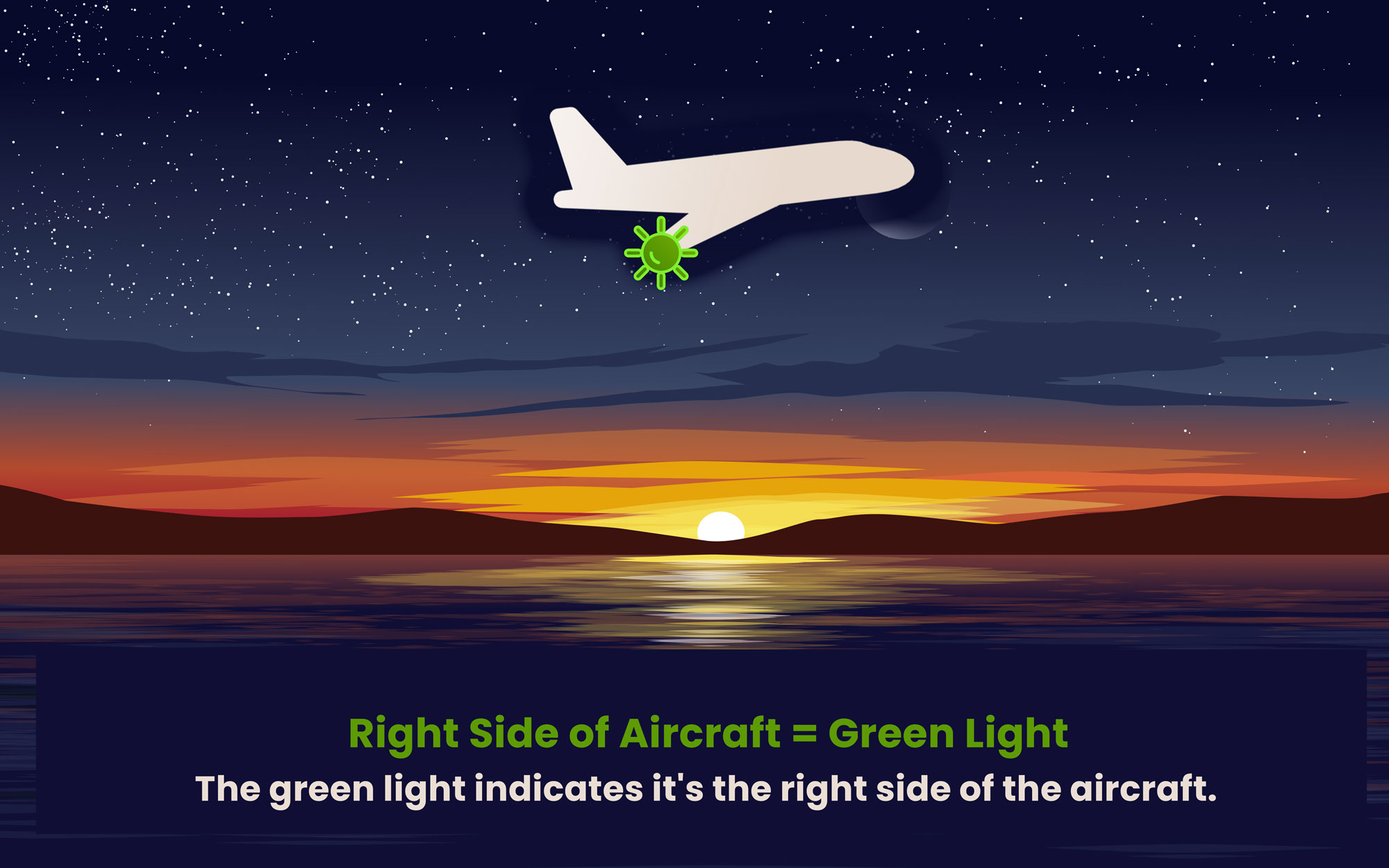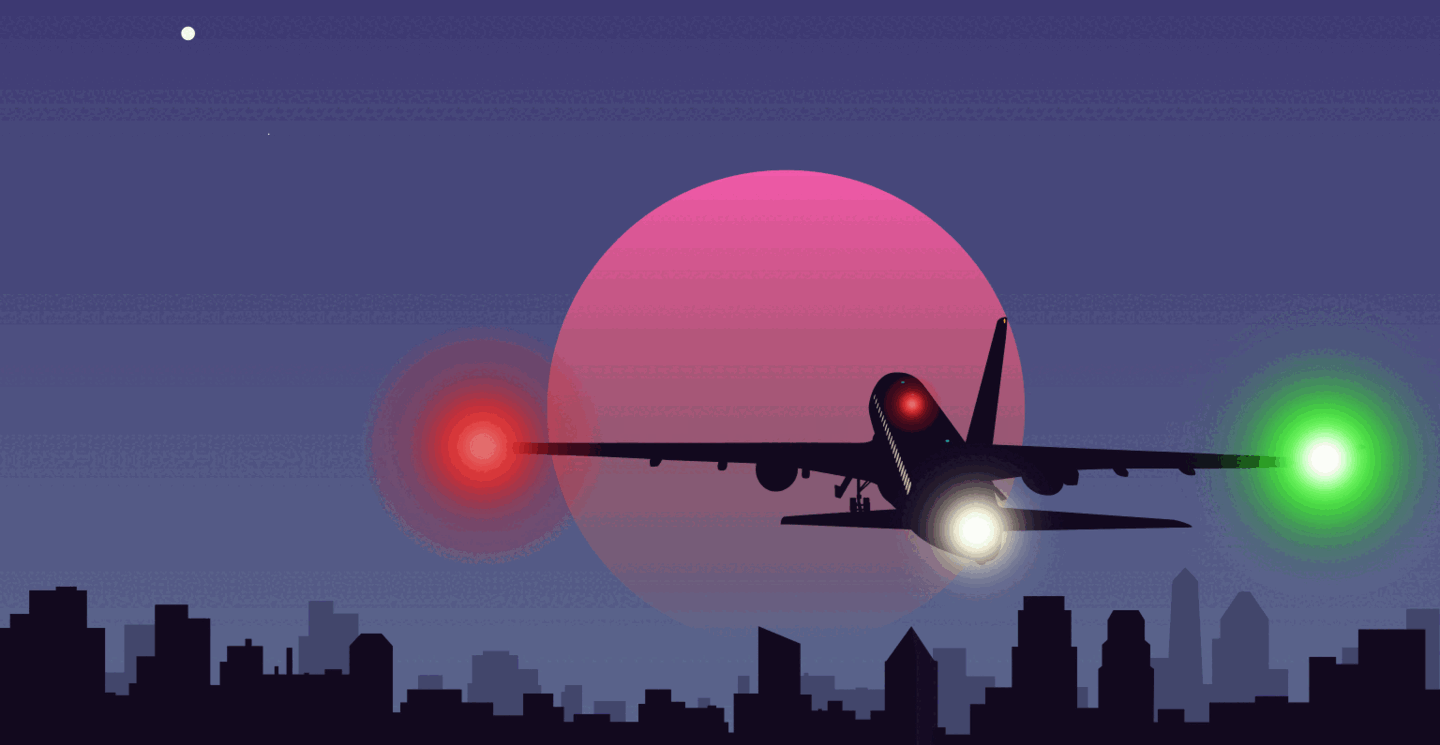How to Interpret Aircraft Anti-Collision Lighting and Flight Direction
Manned aircraft use a combination of lights to indicate their position and movement, helping other pilots and observers determine their trajectory and orientation from the sky as well as the ground.
Step 1: Identifying the Left and Right Sides of an Aircraft
To begin, let’s clarify the orientation of an aircraft from the pilot’s perspective.
Inside the cockpit, the left side of the aircraft is referred to as the port side, while the right side is known as the starboard side.
This distinction helps in understanding the placement and meaning of the aircraft’s navigation lights. In the visual aid below, you’ll see the cockpit view with the left side clearly marked as port and the right side as starboard.
This orientation is consistent across all aircraft so that no matter where you are, you can accurately interpret the aircraft’s lighting signals based on this standard layout.

Step 2: Aircraft Light Colors and Their Meaning
Determining Aircraft Direction Based on Lights
Scenario 1: Crossing to Your Left
During a night flight you observe a steady red light and a flashing red light. What is the general direction of movement of the other aircraft?
If you see a steady red light and a flashing red light, it indicates the aircraft is crossing to your left.

Scenario 2: Crossing to your Right
During a night flight, you see a steady green light and a flashing red light. How can you determine the direction of the aircraft’s movement?
If you observe a steady green light and a flashing red light it indicates that the aircraft is crossing to your right.

Scenario 3: Aircraft Approaching You
If you see both solid red and green lights, the aircraft is heading towards you.
Scenario 4: Aircraft Moving Away from You
If you observe only the white strobe light on the tail of an aircraft, it means the aircraft is moving away from you.
The white strobe light, typically found on the tail, is designed to make the aircraft visible from behind.





